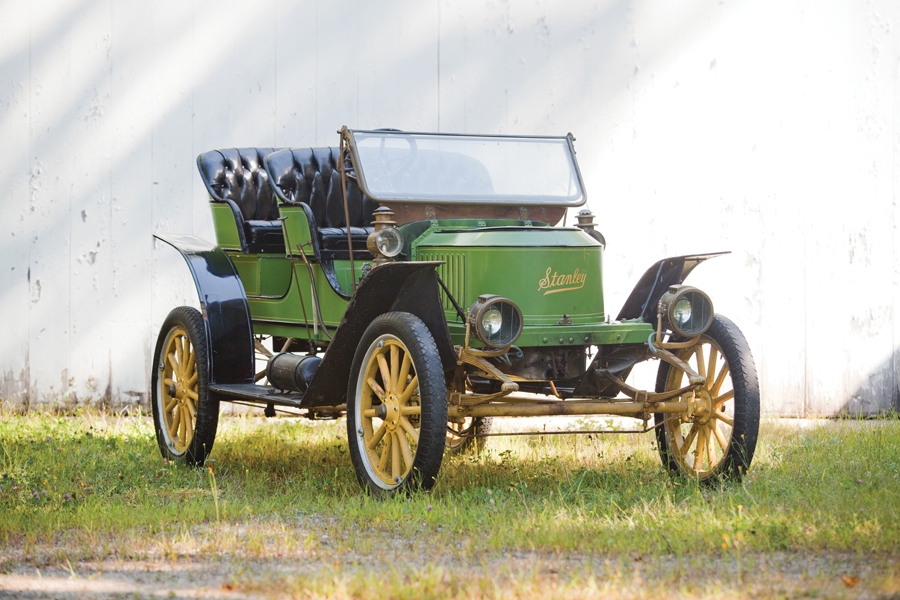Chassis Number: 4520
This Stanley Model E2, one of six models of the Stanley steam car available in the 1909 catalog, is powered by a 10-horsepower twin-piston engine — a marvel of simplicity that employed only 13 moving parts.
Once the big front-mounted boiler had been filled with water, fired, and tended by the owner’s careful hands, the Model E2 could hum along and climb steep grades with ease. It was a fun car, combining the eerie silence of steam with the peppy performance that, by the late 1900s, “automobilists” were beginning to appreciate.
Former Stanley employee Ralph Van Dine also appreciated it, as he rescued this car in the early 1940s as one of numerous old Stanleys resurrected in the gas-rationing days of World War II.
This Stanley has recently been returned to running and driving order for this sale by noted Brass Era specialist Stu Laidlaw. It continues to wear its vintage repaint, with more recently refinished fenders and older restored black upholstery, which only add to the charm and authenticity of its presentation. Only the wheels are inauthentic, with good reason; when this car was found in the early 1940s, the current size of tires was not available.

